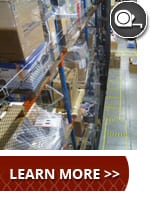Materials and Measurements
Redden Net Custom Nets has been designing, building and rigging nets for more than a half century– which means if you’ve got questions, we’ve got answers.
- Not sure what measurements are required? Call us. We’ll explain what you need and how to do it.
- Don’t know what gauge and mesh size you need? We do and we’re happy to tell you.
- Wondering how you’re going to access the area you need to net? Explain the area and we’ll explain your options.
Visit our Net Gallery to take a close up look at net sizes and to understand which sizes and materials are appropriate for the various applications (Sports, Golf, Bird Netting etc.)
When you’re just getting started, we can help you get started right. Call one of our of our thoroughly experienced, trained professionals – we’ve got more than 100 years of experience between us, so you can be sure we know what we’re talking about. And we’re more than happy to talk to you.
You can call us at 604.530.2213 (or Toll Free 1.800.667.9455) for assistance. You can also email info@redden-net.com or complete our online form.
The Material Choice for Your Nets
Nowadays, industrial nets are constructed from synthetic fibres. (We’ve been around so long we can remember making them out of natural fibres.) For the last forty years, polyamide (you probably know it as “nylon”, its commercial trademark) polyethylene, polypropylene, polyester have been the materials of choice. Redden Net uses these synthetic fibre materials because they are:
- Imputrescible (this means they don’t decay)
- Lightweight
- Highly waterproof
- Offer better resistance than natural fibres.
Across our company, we use all of those synthetic fibres, but which one we choose for your net depends on what you need and where and how it will be installed.
So when you’re ordering a net, here’s the information you’ll want to specify:
- Kind of gear to build
- Size of the mesh
- Type of fibre
- Twine diameter
- Net colour
- Net dimensions
Choice of Netting Twine for Fishing Nets
When choosing netting twine to make fishing nets, net makers use many measurement systems. If you’re not familiar with the way twine and netting are denoted, it can be tricky to specify what you want. It can be even harder to make sure you’re specifying the right measurement for your project. To make it easy, we’ll explain. Here are the different measurement systems:
- Meter per kilogram ( M/kg)
- Yard per pound ( Yd/LB )
- International system ( Den )
- Millimeter system ( D/mm )
In our catalogue at Redden Net Custom Nets, we use the Denier system for nylon twine and nets and the diameter/millimeter system for polyethylene twine. For certain kinds of trawls, we use the Tex system.
The International System
The international system is based on the weight per unit of length measured in “deniers”.
A denier is a weight in grams for a 9,000 metre length of twine. So if someone says something is “210 dens”, they mean that this 9,000 metre length of twine weighs 210 grams.
When you see a measurement like “210X 3X4”, this means that the weight is 210 grams, the netting yarn is made of three strands, and each of those strands is made of four fibres.
The Diameter / Millimeter System
Polyethylene twines have a bigger diameter than polyamide or nylon strands, which is why we list polyethylene twines in diameter by millimetre.
Polyethylene diameters range from 0.05 mm to 6. mm. The largest diameters for polyethylene are considered rope, not twine.
| EQUIVALENCE OF DIFFERENT SYSTEMS TO IDENTIFY TWINE | ||||
| M/K | Y/D | DENIER | TEX | M/D |
| 13300 | 6750 | 210/3 | 75 | 0,30 |
| 6450 | 3225 | 210/6 | 155 | 0,40 |
| 2125 | 1063 | 210/18 | 470 | 0,72 |
| 1055 | 528 | 210/36 | 945 | 1,15 |
How To Measure the Mesh Size:
 Mesh (fig.1) is made of four equal sides and four knots.
Mesh (fig.1) is made of four equal sides and four knots.
There are many ways to measure the mesh but the most common method involves stretching the mesh vertically (fig.2) and then using a ruler to measure between the two knots. (Use the middle of each knot as the start and end points.)
However, even when machine-made, a wall of webbing won’t have perfectly equal meshes – which means that the measurement for each mesh will vary slightly. As a result, and to get a more consistent, precise measurement, we recommend taking several mesh measurements in several different places across the webbing.
In some countries, the standard mesh measurement is different.
To take this measurement, you stretch the meshing, measure from the middle of the top knot to the middle of the bottom knot, and then divide that number in half.
Hopefully that very brief tutorial helps you understand how to specify the materials you need for your net project – but to be sure, please feel free to call us at 604.530.2213 (Toll Free 1.800.667.9455) to discuss your project or request a quotation. You can also email info@redden-net.com or complete our online form.


